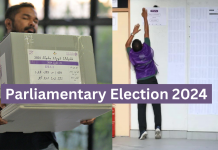In just a short time since taking office on November 17, President Muizzu has been busy appointing ministers to his administration.However, this has caused worry among the public because the president initially promised to make the government more efficient and reduce political appointments.
Despite the promise of a smaller government structure, the current administration has actually appointed a significant number of state and deputy ministers. There are now 91 state ministers and 163 deputy ministers, which is more than the previous government. This goes against President Muizzu’s commitment to a leaner government.
it’s interesting to note that the Local Governance Ministry has the most state ministers, followed by the Gender Ministry, Foreign Ministry, and the President’s Office. This seems to show a wide distribution of responsibilities across different areas.
However, the financial side of these appointments is a cause for concern. State ministers receive a monthly salary of MVR 47,000, contributing to a monthly expense of MVR 4.2 million.Deputy ministers, earning MVR 35,000 per month, add to a total monthly expense of MVR 5.7 million. This means the government is spending a significant MVR 10 million each month on the salaries of state and deputy ministers.
Comparing this with the previous administration, which had far fewer deputy and state ministers, raises questions about the necessity and efficiency of the current larger workforce.
The recent appointment of an additional 20 individuals to various government offices, along with the existing 22-member cabinet, is expected to increase expenses even more. Citizens are worried about the sustainability of this staffing model and whether it aligns with the promised efficiency and cost-effectiveness.
As the administration moves forward, people are eager to see how President Muizzu will address these concerns. The question remains: will the current trend of increasing government appointments bring the promised benefits or pose challenges in the long run?


















